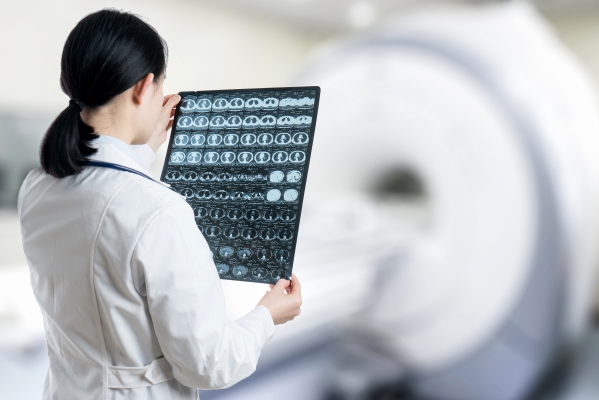Pancreatic cancer, Pancreas, Tobacco smoking, Chronic pancreatitis
Description : The pancreas is a gland found near your stomach that is responsible for the release of hormones and
Article Details :
What is Pancreatic cancer?
The pancreas is a gland found near your stomach that is responsible for the release of hormones and enzymes that carry important functions in digestion and blood sugar level regulation. In some people, cancer may develop in this organ. Pancreatic cancer is the 10th most common cancer in men and the 9th most common in women. It accounts for around 8% of all deaths caused by cancer.
Pancreatic cancer is unfortunately difficult to diagnose during its early stages. When the diagnosis is made, the cancer has already spread in most individuals. This is called metastasis and it is when the cancer affects surrounding or distant organs. The most commonly affected distant organs during metastasis are the liver and the lungs while the most commonly affected surrounding organs include the stomach and the large intestine.
It has been estimated by the American Cancer Society that in 2020, around 57,600 people will be newly diagnosed with the disease. Pancreatic cancer is rare among people aged less than 45 years old. The frequency of the condition increases with increasing age.
There are several treatment options available to treat pancreatic cancer and the choice will depend on the extent of the disease at diagnosis.
Causes and risk factors of Pancreatic cancer
There are several factors that may cause or increase your risk of having pancreatic cancer. These include:
- Tobacco smoking: This is the most common known environmental risk factor for pancreatic cancer. Studies have shown that tobacco smoking causes up to 30% of all the cases. If you smoke, you are twice more at risk of having the disease compared to people who do not smoke. It takes 5-10 years of smoking cessation to reduce your risk to similar to that of non-smokers.
- Obesity and diet: People who are obese are more likely to have pancreatic cancer. You are less at risk if you consume a lot of fresh fruits and vegetables. Excessive consumption of processed foods increase your likelihood of having pancreatic cancer.
- Diabetes: People who have been diabetic for at least 5 years are prone to have pancreatic cancer.
- Chronic pancreatitis: Long-standing inflammation of the pancreas is an important risk factor for developing pancreatic cancer. Studies have shown that if you have chronic pancreatitis, you are 26 times more prone to end up with pancreatic cancer.
- Genetics: Pancreatic cancer is due to a genetic cause in about 5-10% of people. There are some familial genes that can be inherited causing the disease later in life.
- Race: In the United States, being a black male increases your risk of having the disease. The exact reason is however unknown.
Signs and symptoms
In the early stages of the disease, the signs and symptoms are usually not specific and subtle. Some of the signs and symptoms may include:
- Anorexia
- Malaise
- Nausea
- Fatigue
- Upper abdominal pain
- Back pain
With progression of the disease, other symptoms may occur:
- Significant and unintentional weight loss
- Upper abdominal pain that moves to the back
- Abdominal pain mostly at night
- Pain after eating or when lying flat
- Diarrhoea
- Pungent smelling and greasy stools (difficult to flush away)
- Early feeling of fullness when eating
- Yellowing of skin, itchy skin, darkening of urine and pale stools (if the pancreatic cancer causes obstruction to the outflow of bile – obstructive jaundice)

Making a diagnosis
Your doctor will start by taking a detailed history from you. He/she will then examine you for any other signs and symptoms associated with gastrointestinal diseases. Several tests can be used to help in making the diagnosis of pancreatic cancer. These include:
- Laboratory tests: If the cancer is causing obstruction to the outflow of bile into the gastrointestinal tract, this leads to obstructive jaundice. In this case, the level of bilirubin in the blood will be elevated. Amylase and lipase levels in the blood may also be increased. Other tests may be done to look for tumour markers which are substances found in your blood produced by cancer cells in your body. These include carbohydrate antigen (CA) 19-9 and carcinoembryonic antigen (CEA).
- Computed tomography (CT) scan: This is an imaging modality used to visualise the structures found in the abdomen. The size and exact location of the pancreatic cancer can be evaluated using CT scan. It can also be used to assess whether the cancer has spread to surrounding structures.
- Endoscopic ultrasonography: In this procedure, a tube with an ultrasound transducer on its end is inserted through your mouth until it reaches your stomach. It is then used to visualise the different parts of the pancreas.
- Endoscopic retrograde cholangiopancreatography (ERCP): This is procedure that allows detailed visualization of the pancreas and the biliary system to look for any mass or obstruction. In this procedure, a dye is injected into the ducts of your pancreas and biliary system through a flexible tube inserted in your Read more




